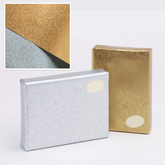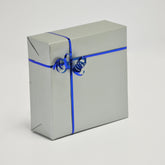A Guide To Packaging Symbols

Baffled by packaging symbols? You’re not alone. Regularly updated, frequently altered, and often confused, packaging symbols are one of the most powerful yet complicated components of product information. This quick guide gives a 2022 update.
Why do we need symbols on packaging?
Symbols are a very easy way for people to understand information. As the world becomes increasingly globalised, they are also an important way of conveying information across language barriers. Symbols are legally recognised, so they can help companies demonstrate compliance to a choice of standards and certifications.

The Recycling Symbol
Also known as the Mobius Loop – a nod to the mathematical principle of infinity – the recycling symbol represents compliance with Packaging and Packaging Waste Directive 94/62/EC Article 8.[1] Recognisable by its iconic looped arrows, the symbol tells consumers that the materials are suitable for recycling. Used since its launch on Earth Day in 1970, research suggests that 59% of consumers understand the symbol.[2]

The Green Dot
Another symbol relating to the European Packaging and Packaging Waste Directive, the Green Dot has the honour of being a worldwide protected trademark. Used by over 29 countries since its launch in 1990, the Green Dot tells a consumer that the manufacturer has already made a financial contribution towards the qualified recovery of the materials. In many countries, the trademark is mandatory, and is used in a similar way to a license fee.

Do Not Litter
Invented by Keep Britain Tidy, the Do Not Litter symbol is a gentle reminder for consumers to dispose of rubbish thoughtfully. Tapping into psychological principles of using positive messages rather than threats, the Do Not Litter logo can be used on all packaging regardless of its recycling status. The symbol gained emoji status in 2010, cementing it in the public consciousness.

Compostable
The distinctive seed symbol represents packaging that can enjoy a new life as compost. The seed represents a formal certification, and packaging can only display it if it has passed rigorous EU standards. In theory, any packaging made from organic material is compostable, but companies need to take care with additions such as labels, which often require adhesive polymers that cannot biodegrade.

FSC Certified Paper
The Forest Stewardship Council (FSC)[3] is a global network promoting responsible and sustainable forestry. Packaging that carries the ‘tree with a tick’ label will have been made with environmentally sensitive wood pulp, with the planting of trees being the most widely used strategy. FSC products often have strong social profiles, providing jobs for local communities.

Resin Identification Codes
Resin Identification Codes (RICs) inform recycling companies about the type of plastic in the packaging. There are currently seven RICs, but these are expected to increase as materials such as Recycled Polyethylene Terephthalate (rPET) become more common. Although there are no UK laws to state that companies must include RICs on their packaging, without them Local Authorities (LAs) will not risk recycling plastic materials.

Recyclable Aluminium
A few decades ago, cans had to be tested with a magnet to determine whether they could be recycled or not. Today, we have the helpful symbol featuring two curved arrows. Packaging containing aluminium – which includes most ‘tin’ cans, drinks cans, and food trays – is accepted by most Local Authority recycling centres as part of their mixed metal collection. Consumers are asked to wash aluminium prior to recycling.

Made in Britain
The Made in Britain logo tells the consumer that the product and packaging has been made by UK manufacturers.[4] The symbol is used to convey adherence to quality standards and can also help to encourage local economies. The public is regularly encouraged to shop locally, which supports national industries while minimising environmental impacts such as shipping emissions. As a consequence, the Made in Britain mark is highly valued by manufacturers and consumers alike.
Next steps
Packaging symbols are a helpful way of showing consumers and Local Authorities how to properly dispose of waste while boosting a brand’s sustainability credibility. If you want more information about the right symbols to use on your materials, please call 01923 220055 today.

[1] https://www.legislation.gov.uk/en/eudr/1994/62/article/8





